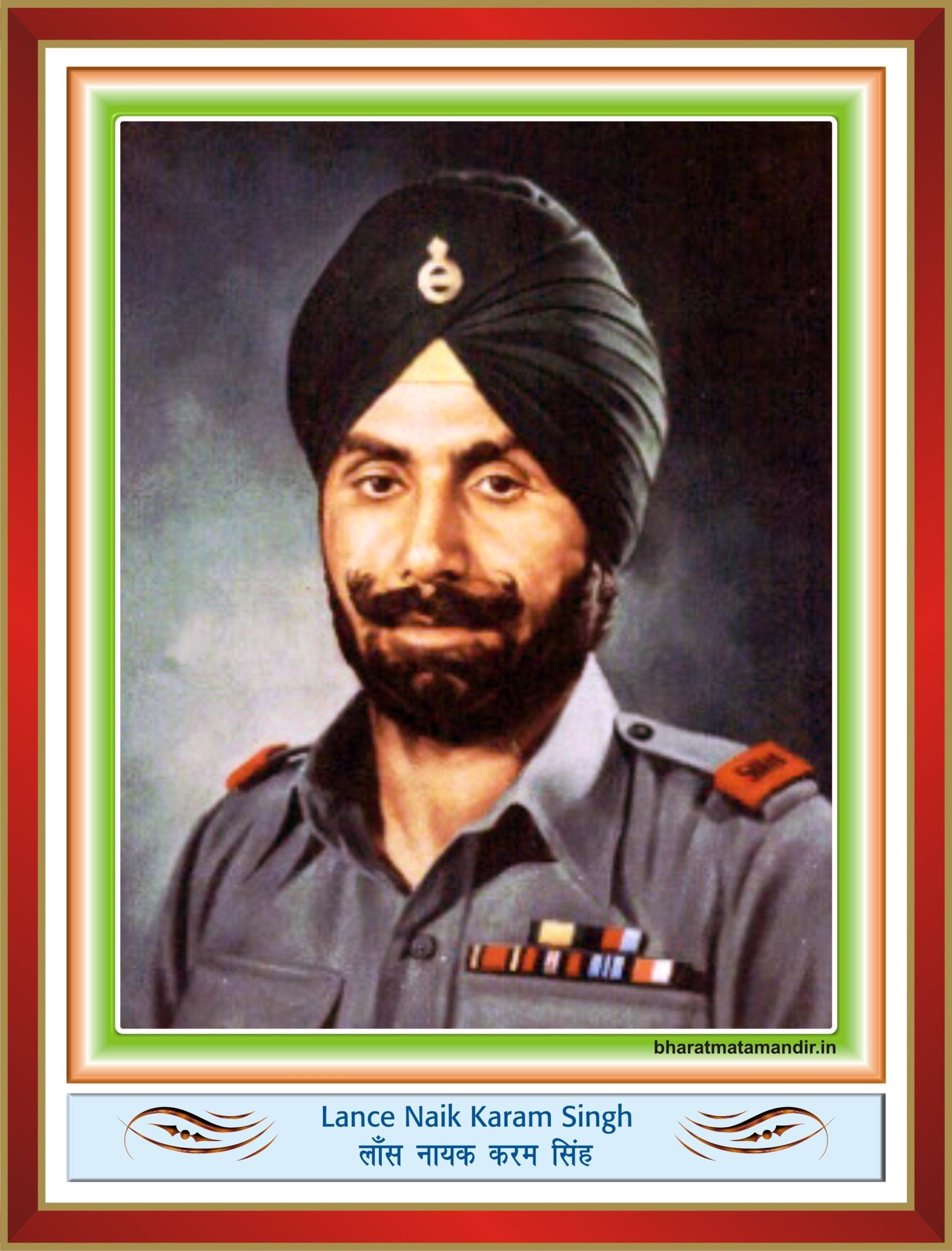
Lance Naik Karam Singh MM, a Sikh, was born on 15 September, 1915 in Barnala, Punjab . He is an Indian military war hero who was awarded the Param Vir Chakra, India’s highest wartime military award, in 1948.
Karam Singh retired from the Indian Army as Honorary Captain. He is survived by his wife Gurdial Kaur.
Military career
He was enrolled in the 1st battalion of Sikh Regiment on 15 September, 1941. Karam Singh fought for India in World War II and was awarded the Military Medal on 14 March 1944.
Karam Singh earned his Param Vir Chakra in the Indo-Pakistani War of 1947. In the war, India and Pakistan fought battles for control of the Tithwal sector. India captured Tithwal on 23 May, 1948,[1] but subsequently lost hold of the position because of strong Pakistani counter-attacks. Between May and October 1948, the two forces engaged in multiple battles over Tithwal. Company Havildar Major Piru Singh Shekhawat showed extreme bravery in a battle near the River Krishnaganga between 17 and 18 July, 1948 and was posthumously awarded the Param Vir Chakra.
In October 1948, Pakistan troops launched an attack with the objective of capturing Richhmar Gali to the south of Tithwal and occupying Nastachur Pass to the east of Tithwal. Lance Naik Karam Singh was commanding a forward outpost in the Richhmar Gali area. During the initial attacks, all the bunkers in the platoon area were destroyed by heavy enemy shelling. Communications with his commander was also cut off, hence Karam Singh was unable to update his situation or ask for reinforcements. Although wounded, he brought back two injured comrades to the frontline with the help of another man to the main company position and defended Richhmar Gali.
Twice wounded by the fifth enemy attack, Lance Naik Karam Singh refused evacuation and continued to hold on to the first-line trenches. When enemy soldiers secured a position close to the frontline, Karam Singh jumped out of his trench and bayoneted the two intruders to death. This bold action so demoralised the enemy that they broke off the attack. In all, the outpost was attacked eight times that day and the Sikhs repulsed the enemy every time. For his outstanding role in the battle of Tithwal, Karam Singh became the second recipient of the Param Vir Chakra.
Citation
The citation for the Param Vir Chakra awarded to him reads:[2]
LANCE NAIK KARAM SINGH
Tithwal in Jammu and Kashmir was captured on 23 May 1948. After that date, the enemy made numerous attempts to recapture Richmar Gali, and thence Tithwal. On 13 October 1948, coinciding with Id, the enemy decided to launch a brigade attack to retake Richmar Gali, and bypassing Tithwal, advance into the Srinagar Valley . Lance Naik Karam Singh was commanding a section at Richmar Gali.
The enemy commenced its attack with heavy shelling of guns and mortars. The fire was so accurate that not a single bunker in the platoon locality was left unscathed.
Communication trenches caved in. Bravely, Lance Naik karam Singh went from bunker to bunker, giving succor to the wounded and urging the men to fight.
The enemy launched eight separate attacks that day. In one such attack, the enemy managed to obtain a foothold in the platoon locality. Immediately, Lance Naik Karam Singh, who was severely wounded by then, with a few men, hurled himself in a counter-attack and evicted the enemy after a close quarter encounter which accounted for many enemy dead, having been dispatched by the bayonet.
Lance Naik Karam Singh proved himself to be a dauntless leader of men in crisis. Nothing could subdue him and no amount of fire or hardship could break his spirit.